Orphans of the Storm
8 /10 1 Votes8
Director D. W. Griffith Initial DVD release December 29, 1998 Duration | 8/10 IMDb Genre Drama, History Prequel Dream Street Country United States | |||||||||||||||||||||||||||||||||
 | ||||||||||||||||||||||||||||||||||
Release date December 28, 1921 (1921-12-28) (US) Based on Les Deux Orphelines (play) by Adolphe dEnnery and Eugene Cormon Writer Adolphe dEnnery (novel), Eugene Cormon (novel), D.W. Griffith Cast (Henriette Girard), (Louise Girard), (Chevalier de Vaudrey), (Count de Linieres), Katherine Emmet (Countess de Linieres), (Marquis de Praille)Similar movies Related D W Griffith movies | ||||||||||||||||||||||||||||||||||
Orphans of the Storm is a 1921 silent drama film by D. W. Griffith set in late-18th-century France, before and during the French Revolution.
Contents

The last Griffith film to feature Lillian and Dorothy Gish, it is often considered Griffith's last major commercial success, after box-office hits such as The Birth of a Nation, Intolerance, and Broken Blossoms.
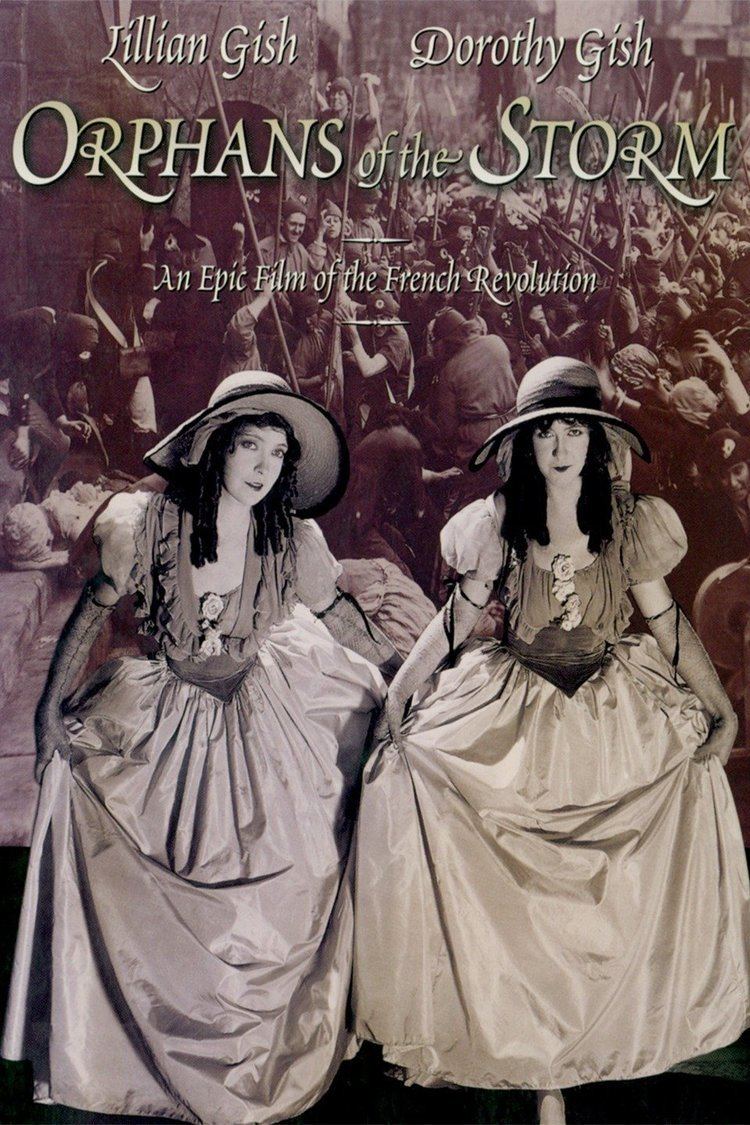
Like his earlier films, Griffith used historical events to comment on contemporary events, in this case the French Revolution to warn about the rise of Bolshevism. The film is about class conflict and a plea for inter-class understanding and against destructive hatred. At one point, in front of the Committee of Public Safety, a main character pleads, "Yes I am an aristocrat, but a friend of the people."
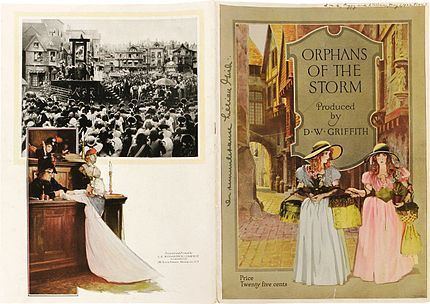
The film is based on the 1874 French play Les Deux Orphelines by Adolphe d'Ennery and Eugène Cormon, which had been adapted for the American stage by N. Hart Jackson and Albert Marshman Palmer as The Two Orphans, premiering at Marshman Palmer's Union Square Theatre (58 E. 14th St.) in New York City in December 1874 with Kate Claxton as Louise. It had been filmed in the United States twice before Griffith did his film: in 1911 by Otis Turner and in 1915 by Herbert Brenon (the lost Theda Bara film The Two Orphans). The play had also been filmed twice in France in 1910: by Albert Capellani and by Georges Monca.

Plot

Just before the French Revolution, Henriette takes her close adopted sister Louise to Paris in the hope of finding a cure for her blindness. She promises Louise that she will not marry until Louise can look upon her husband to approve him. Lustful aristocrat de Praille (whose carriage kills a child, enraging peasant father, Forget-not) meets the two outside Paris. Taken by the virginal Henriette's beauty, he has her abducted and brought to his estate where a lavish party is being held, leaving Louise helpless in the big city. An honorable aristocrat, the Chevalier de Vaudrey helps Henriette to escape de Praille and his guests by successfully fighting a duel with him. The scoundrel Mother Frochard, seeing an opportunity to make money, tricks Louise into her underground house to be kept prisoner. Unable to find Louise with the help of the Chevalier, Henriette rents a room, but before leaving her de Vaudrey comforts and kisses the distressed woman. Later, Henriette gives shelter to admirable politician Danton, who after an attack by Royalist spies following a public speech falls for her. As a result, she runs foul of the radical revolutionary Robespierre, a friend of Danton.
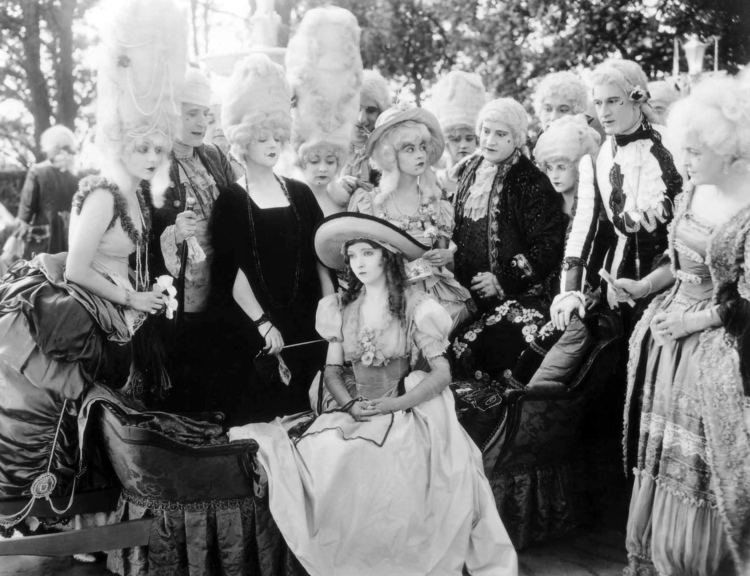
Mother Frochard forces Louise into begging. Meanwhile, de Vaudrey proposes to Henriette and she refuses. After expressing love for each other, he promises Henriette that Louise will be found. King Louis XVI orders Henriette to be arrested, due to his disapproval of de Vaudrey's choice of wife, and the Chevalier is also sent away while his aunt visits Henriette. During the meeting, Louise is heard singing outside, where Frochard has told her to walk blindly and sing. Henriette calls out from her upstairs balcony, but the panicked Louise is dragged off by Frochard and Henriette is arrested and sent to a women's prison.
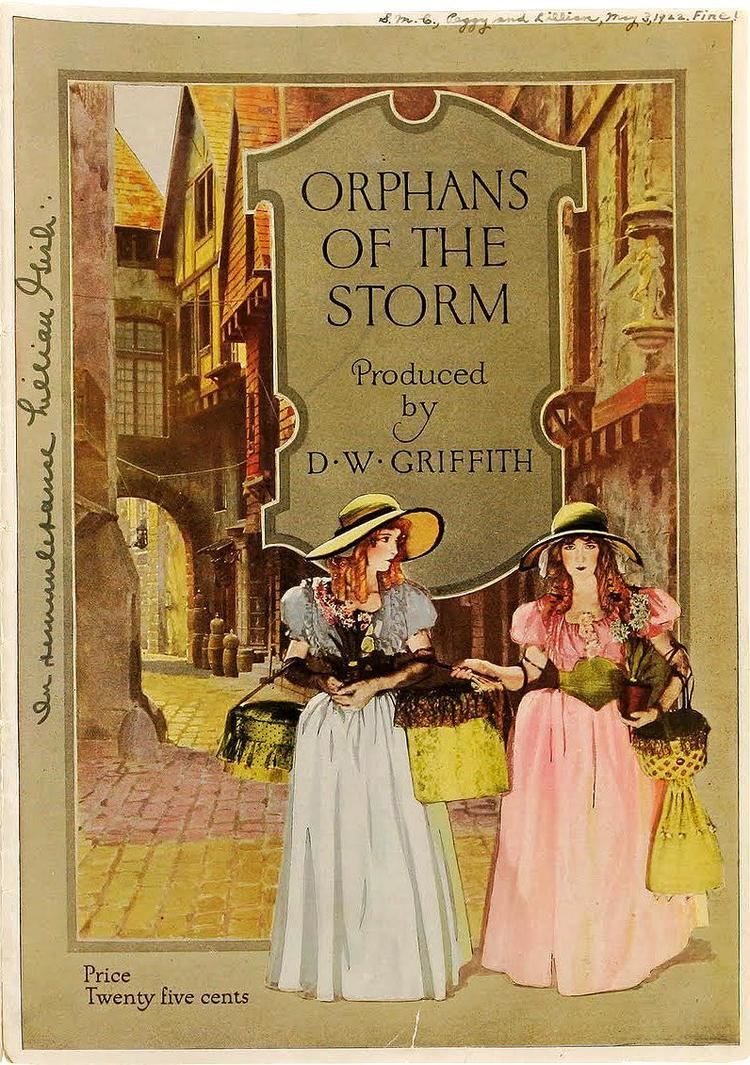
Louise and Frochard's begging continues with the other two Frochards, and before long the Revolution begins. A battle between the Royalist soldiers and the people allied with the police, who are successful, results in aristocrats being killed and the prisoners of the "Tyrants" (including Henriette) being freed. A people's 'rag-tag' government is formed, and Forget-not takes his revenge against de Praille.
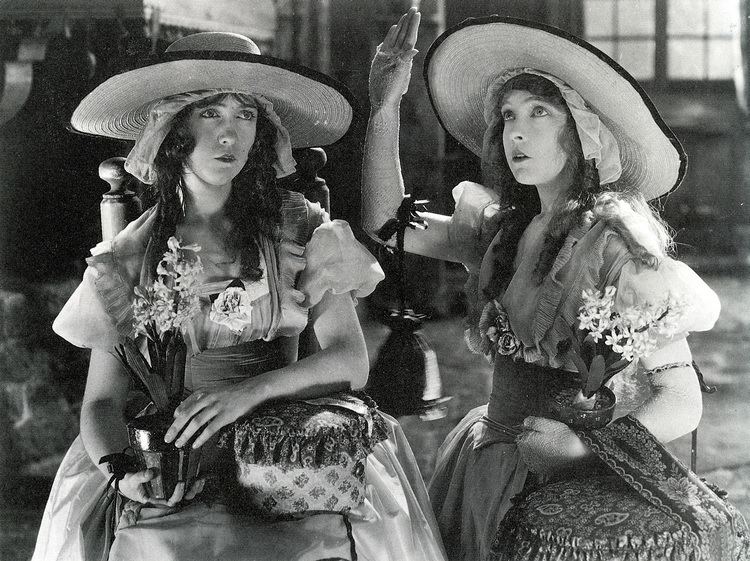
Robespierre and Forget-not send Henriette and her lover, the Chevalier de Vaudrey, to the guillotine, for hiding de Vaudrey, an aristocrat, who returned to Paris to find her. However, Danton manages to obtain a pardon for them. After a race through the streets of Paris he just manages to save Henriette and offers her to the Chevalier, when the two orphans unite. A doctor restores Louise's sight, she approves marriage between Henriette and the Chevalier, and a better-organized Republic forms in France.
Visual effects
The movie uses several visual effects throughout to capture the emotion of its story, using monochromic filters of red, blue, green, yellow and sepia to show feeling with the silent action which is accompanied by music; the movie also uses fade-ins to achieve this effect, expressing the distinct class divide and captivating the attention of viewers for a two-and-a-half-hour film.
Background
The Two Orphans, the English-language version of the French play upon which the movie is based, had been filmed at least twice by 1920, and had been a staple of the actress Kate Claxton. After the premiere at the original Union Square Theatre in 1874, she had performed it hundreds of times for various theatrical companies in New York, including the Brooklyn Theater (she was performing it there on the night of the infamous Brooklyn Theater Fire in 1876), and she had eventually acquired the US rights to the play.
In securing the film rights, Griffith had to wrangle with Miss Claxton, who for unknown reasons seems to have been reluctant to allow the story to be filmed a third time. When Griffith completed his film for release, a rival German version of the story had been made (Claxton owned foreign film rights as well) and was being prepared for release in the US at the same time as Griffith's version. Griffith bought out the US distribution rights to the German version so that it could not conflict with the earning potential of his own film.
The New York Times wrote: "As the vivid scenes of the historically colored melodrama flashed one after another on the screen everyone surely felt that Griffith was himself again" but added "The seasoned spectator, no matter how he may let himself go, knows that every delay is a device to heighten the suspense and every advantage given the rescuers is calculated to evoke his cheers (...) whatever he does, he is not surprised when the girl is saved".
References
Orphans of the Storm WikipediaOrphans of the Storm IMDb Orphans of the Storm themoviedb.org
